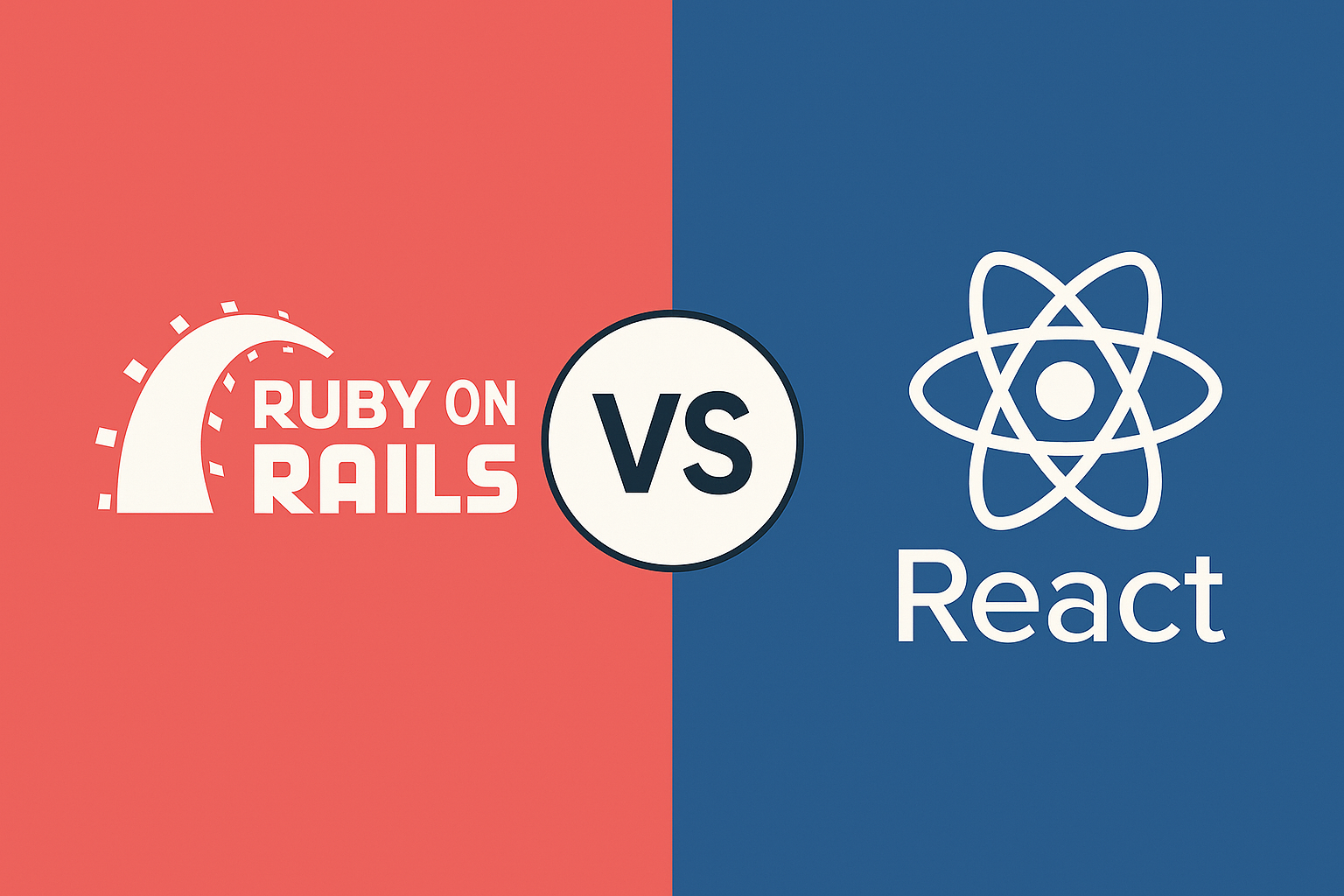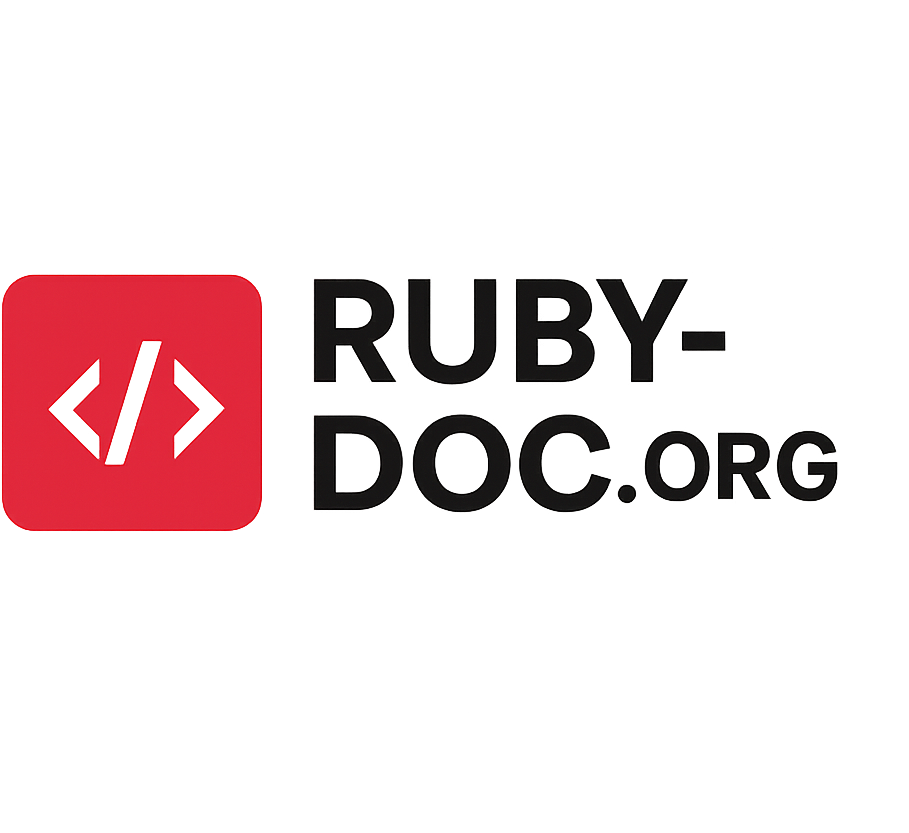
In the ever-evolving landscape of web development, choosing the right technologies for your tech stack is crucial. Among the most widely discussed combinations are Ruby on Rails and React. While these tools serve very different purposes—Ruby on Rails being a backend web application framework and React a frontend JavaScript library—the comparison “Ruby on Rails vs React” is still a common topic among developers, product managers, and business owners alike.
In this in-depth article, we’ll explore the roles, strengths, and ideal use cases for Ruby on Rails and React, helping you determine which is the best fit—or how they can complement each other in your next project.
What is Ruby on Rails?
Ruby on Rails (RoR) is an open-source server-side web application framework written in the Ruby programming language. Created by David Heinemeier Hansson in 2004, Rails follows the Model-View-Controller (MVC) architectural pattern and emphasizes convention over configuration, making it easier to build full-stack web applications quickly.
Key Features:
- MVC Architecture
- Convention over Configuration
- Active Record (ORM for database interactions)
- Built-in testing tools
- RESTful application design
Popular Apps Built with Ruby on Rails:
- GitHub
- Shopify
- Basecamp
- Airbnb (initially)
- Hulu
What is React?
React is an open-source JavaScript library developed by Facebook (now Meta) for building user interfaces, especially for single-page applications. Released in 2013, React is focused on the “View” part of MVC and is widely used for building fast and dynamic frontend applications.
Key Features:
- Component-based architecture
- Virtual DOM for efficient rendering
- JSX syntax for templating
- One-way data binding
- Strong community and ecosystem (e.g., Next.js, Redux)
Popular Apps Built with React:
- WhatsApp Web
- Netflix
- Dropbox
Ruby on Rails vs React: Core Differences
Let’s dive deeper into the main differences and how each tool fits into the web development process.
1. Frontend vs Backend
- Ruby on Rails: Primarily a backend framework. It handles database operations, business logic, server-side rendering, and routing.
- React: A frontend library focused solely on building the user interface.
Takeaway: They are not mutually exclusive. In fact, they’re often used together: Rails for the backend API and React for the frontend UI.
2. Language Used
- Rails: Written in Ruby, a dynamically typed, object-oriented language known for its developer-friendly syntax.
- React: Written in JavaScript, the most popular scripting language for frontend development.
3. Development Speed
- Rails: Allows rapid prototyping and fast development with built-in tools and scaffolding features.
- React: Requires more initial setup (especially with bundlers like Webpack) but offers reusable components, which saves time in large applications.
Verdict: Rails is generally faster for getting an MVP off the ground, while React shines in complex UI requirements.
4. Performance
- Rails: Performs well for standard web applications but may need optimization for high-concurrency, real-time apps.
- React: Excellent frontend performance due to its virtual DOM and efficient diffing algorithm.
Performance Boost Tip: Use Rails as a JSON API backend and React as the frontend—this decoupling ensures scalable and fast user experiences.
5. Scalability
- Rails: Scalable with the right architecture (e.g., background jobs, caching), but traditionally seen as less scalable than Node.js-based stacks.
- React: Scales UI components well across large applications; ideal for apps with dynamic content and real-time interactions.
6. Ecosystem and Libraries
- Rails: Rich ecosystem of gems (libraries) for almost every backend need.
- React: Massive ecosystem with countless UI libraries (Material-UI, Chakra UI), state management tools (Redux, Recoil), and frameworks (Next.js).
Use Cases: When to Use What
Use Ruby on Rails When:
- You need to build a full-featured web app quickly (like an MVP).
- You prefer convention over configuration.
- You’re building CRUD-based platforms (e.g., eCommerce, SaaS).
- Backend logic and database design are central to your app.
Use React When:
- You’re building a highly interactive frontend (e.g., dashboards, real-time UIs).
- Your application is a single-page application (SPA).
- You want a mobile-first, dynamic user experience.
- You need a flexible and component-based UI architecture.
Combining Ruby on Rails with React
While Ruby on Rails and React can be pitted against each other in a “versus” format, the real power comes from combining them.
Common Architecture:
- Rails API Backend + React Frontend: Rails handles the data and business logic, exposing RESTful or GraphQL APIs, while React consumes these APIs to build a dynamic frontend.
Benefits of This Approach:
- Separation of concerns (cleaner codebases)
- More flexible frontend development
- Better UX with React’s reactivity
- Easier maintenance and scaling
Popular Boilerplates:
- Jumpstart (Rails + React starter kit)
- React on Rails gem
Learning Curve and Developer Experience
Ruby on Rails:
- Easier to learn for beginners due to conventions and documentation.
- Great for full-stack developers who want to build both backend and frontend.
React:
- Slightly steeper learning curve due to JavaScript intricacies, JSX, and tooling.
- Offers greater flexibility, which means more decisions upfront.
Community and Support
Ruby on Rails:
- Mature community with stable documentation.
- Tons of screencasts, tutorials, and active forums.
React:
- Massive developer community.
- Active development and rapid innovation.
- Rich plugin and third-party tool ecosystem.
Hiring and Talent Pool
- React developers are currently in higher demand due to the popularity of JavaScript and SPAs.
- Rails developers are somewhat more niche, but still in demand for startups and legacy systems.
Cost Insight: React devs may command slightly higher salaries due to market demand, especially those with React Native experience.
Security
- Rails: Has built-in security features like CSRF protection, SQL injection prevention, and strong parameter enforcement.
- React: Being a frontend library, security is handled differently. Developers need to be cautious of XSS, insecure APIs, and CORS policies.
Hosting and Deployment
Ruby on Rails:
- Heroku, Render, and Hatchbox offer simple deployment.
- Can be hosted on any cloud server with PostgreSQL and Ruby support.
React:
- Vercel, Netlify, and Firebase make React app deployment seamless.
- Can be deployed as a static site or dynamic app depending on the setup (e.g., with Next.js).
Future Outlook
- Ruby on Rails continues to be updated and remains relevant for backend-focused applications. Rails 7 introduced great features like Hotwire and Turbo.
- React continues to dominate frontend development and is unlikely to be dethroned soon. React Server Components and React 19 are pushing the boundaries further.
Final Verdict: Ruby on Rails vs React
Choose Ruby on Rails if:
- You need a quick, reliable, and scalable backend.
- You want to build an MVP or prototype rapidly.
- Your team is familiar with Ruby.
Choose React if:
- Your app is frontend-heavy with dynamic UIs.
- You need a modern, responsive user experience.
- You’re developing a mobile-first or SPA application.
Use Both Together if:
- You want the best of both worlds—fast backend development and rich, reactive frontends.
- Your team is comfortable managing separate frontend and backend stacks.
- You aim to build a scalable, maintainable, and modern web application.
Ruby on Rails v React – The Take Home
The “Ruby on Rails vs React” comparison is not about which is objectively better—it’s about choosing the right tool for the job. Ruby on Rails offers rapid backend development and is perfect for full-featured web apps, while React provides the flexibility and power to build rich, interactive user interfaces.
In many real-world scenarios, these two technologies are most powerful when used together, forming a robust full-stack development solution that can scale and evolve with your business needs.
Also, check out our Ruby vs Ruby on Rails guide too!
